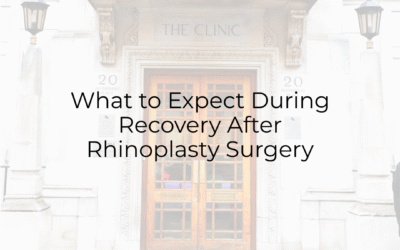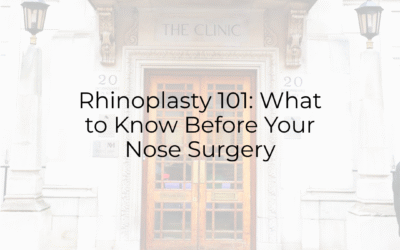When most people hear the term “nose job,” they often think of cosmetic changes made to improve appearance. While rhinoplasty is a popular cosmetic procedure, it is also a vital medical intervention for many individuals suffering from structural issues within the nose. These issues can significantly impact breathing, sleep, and overall quality of life. Let’s explore some of the medical conditions that may make rhinoplasty a necessary solution.
Deviated Septum
One of the most common reasons for a medically necessary rhinoplasty is a deviated septum. The septum is the thin wall of bone and cartilage that divides your nasal passages into two sides. When it’s significantly off-center, or deviated, it can block one or both nostrils. This blockage can lead to chronic breathing difficulties, frequent nosebleeds, facial pain, and noisy breathing during sleep, also known as snoring. A specific type of rhinoplasty, called a septoplasty, corrects this issue by straightening the septum, which opens up the airway and restores normal breathing.
Chronic Sinusitis
While not always solved by surgery alone, chronic sinusitis can sometimes be linked to structural problems in the nose. If you constantly battle sinus infections, congestion, and pressure that don’t respond well to medication, an underlying anatomical issue could be the cause. Nasal polyps or a deviated septum can obstruct sinus drainage, creating an environment where infections thrive. In these cases, rhinoplasty can be performed alongside sinus surgery to correct the structural problems, improve drainage, and reduce the frequency and severity of sinus infections.
Nasal Fractures and Trauma
A broken nose, whether from a sports injury, an accident, or a fall, can cause both cosmetic and functional problems. A significant fracture can heal improperly, leading to a crooked appearance and internal blockages. This can result in a newly deviated septum or other obstructions that make breathing difficult. Rhinoplasty can be used to repair the damage, realigning the nasal bones and cartilage to restore both the nose’s function and its pre-injury appearance. This procedure helps ensure you can breathe freely and feel confident in your appearance after an injury.
Congenital Defects
Some individuals are born with structural abnormalities that affect the nose and its function. Conditions like a cleft lip and cleft palate are well-known examples that often require a series of surgeries, including rhinoplasty, to reconstruct the nose and mouth area. These complex procedures are not just about aesthetics; they are crucial for enabling proper breathing, speaking, and eating. Other congenital defects, such as severe blockages or structural weaknesses in the cartilage, can also be corrected through rhinoplasty, providing life-changing improvements from a very young age.
If you struggle with persistent breathing issues or any of the conditions mentioned, it’s worth discussing your options with a medical professional. Rhinoplasty is a powerful procedure that goes far beyond cosmetic enhancements, offering real solutions and relief for many medical concerns.



